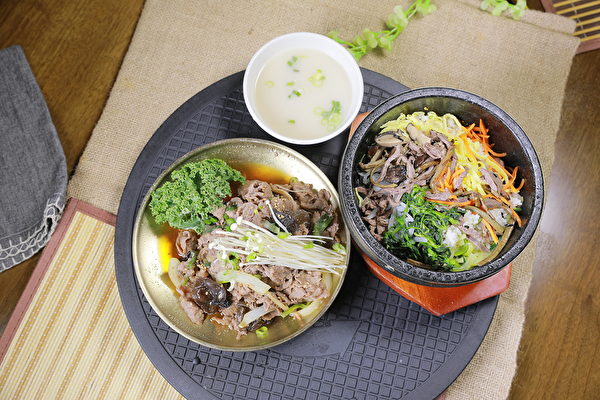With the substantial decline in customer traffic, nearly thirty thousand noodle shops closed their doors in the first half of this year in China, highlighting the waning fortunes of even high-end noodle shops amidst the trend of declining consumer spending.
The so-called high-end noodle shops, with an average customer spending of over 40 Chinese yuan, cater to urban white-collar workers and are typically located in shopping centers and office districts.
According to data from Enterprise Search, as of May this year, there were 31,000 registered noodle shops, while 29,000 were deregistered. The net growth in the first half of the year was significantly lower compared to previous years, indicating the increasing challenges faced by noodle shop businesses, especially high-priced ones.
Known as the “originator of high-end noodle shops” in China, the financial report released by Ajisen Ramen for the first half of the year showed a shift from profit to loss, with an expected net loss of not more than 20 million yuan. This news led to a sharp drop in its stock price.
According to leading catering media platforms in China and insider information from restaurant owners on August 25, once popular “internet-famous” noodle shops like Maji Yong, Chen Xianggui, and Zhang Lala are now experiencing a gradual decline in customers.
A noodle shop owner with two shops in Xujiahui, Shanghai, admitted, “It’s been a tough year for noodle shops. Everyone’s business is tightening up. We’ve tried various strategies like offering free meals, free trials, and even hiring singers to perform, but the results are not as good as last year. Many friends in the noodle business had plans to expand their shops, but this year, none of us have done so.”
The decline of high-end noodle shops can be attributed to the fact that only white-collar workers in central business districts of Beijing, Shanghai, Guangzhou, and Shenzhen were willing to pay premium prices for dining out. However, with these office workers becoming increasingly practical and cost-conscious, they are no longer willing to pay 30 to 40 yuan for a bowl of noodles. Some white-collar workers have even started bringing their own meals to save on expenses.
A survey initiated by Sina Finance asking “How much do you spend on a lunch meal?” attracted 30,000 participants. Among them, 4,881 chose “less than 10 yuan”, while a significant 16,000 chose “10 to 20 yuan”. The combined total shows that nearly 70% of consumers opt for meals costing “20 yuan or less”.
Data from Canteen shows that currently, over half (52.9%) of noodle shops have an average customer spending of 11 to 20 yuan, while only 8.3% of shops have a customer spending above 40 yuan.
Moreover, a wave of layoffs, company closures, and a shift to lower-rent areas is leading to unprecedented vacancies in core office districts. Data from the first quarter of 2024 shows vacancy rates of 18.3%, 15.77%, 18.4%, and 27.0% in Beijing, Shanghai, Guangzhou, and Shenzhen respectively. This trend further distances high-priced noodle shops in these core areas from their target white-collar customers.
To cope with declining foot traffic and profits, many high-end noodle shops are resorting to price reductions and engaging in price wars. Yumian Xiaomian introduced combo meals under 20 yuan, while numerous stores on platforms like Meituan and Dianping are offering group purchases of products priced at 11.9 yuan. Chen Xianggui has launched promotions offering noodles for 9.9 yuan, and Zhang Lala is selling bowls of noodles for as low as 13.9 yuan. Maji Yong, Chen Xianggui, and Zhang Lala have also introduced “unlimited refill” services.
Additionally, some noodle shops are expanding their menu offerings. Brands like Chen Xianggui have included dumplings, meat-stuffed buns, and Northwestern Chinese snacks alongside ramen and mixed noodles.
Insiders in the catering industry believe that the key factor for quick-service restaurants like noodle shops is the “cost-performance ratio”. With slim profit margins becoming the industry norm, the fast-food sector has become an arena where even small profits are hard to come by.
Noodle shops are just a microcosm of the challenges facing the entire Chinese catering industry in the first half of this year. Listed catering companies in China have reported declining profits and frequent losses in their financial reports.
According to the latest news from China’s Red Catering Network on August 19, Cha Baidu estimated that its net profit for the first half of the year decreased by up to 63.03% compared to the same period last year. Ajisen China shifted from profit to loss, expecting a loss of not more than 20 million yuan in the first half of the year. Nayuki Tea reported losses of 420 to 490 million yuan in the first half. Xiabuxiabu estimated a revenue of 2.4 billion yuan in the first half, a 15.9% decrease from the same period last year, with a net loss of 260 million to 280 million yuan. Ajisen China estimated a loss of not more than 20 million yuan in the first half, a significant decrease from the 133 million yuan profit in the same period last year. Xi’an Catering reported an operating income of around 349 million yuan in the first half, a 7.93% decrease, with a net loss of 59.64 million yuan, down 29.53% year-on-year.
Furthermore, companies like Tang Palace China, Taixing Group, Jiujiaojiu, Cha Baidu, as well as Starbucks and Luckin Coffee, have all experienced varying degrees of profit decline, with some enterprises seeing a drop of over 100 million yuan in profits.
In response to these trends, Wang Guoyu, Chairman of Beijing Nanchengxiang Catering Co., commented on the current catering market, saying, “Decreasing prices and declining profits, a quiet high season, and a difficult winter are all dangerous signals. The money you earn in the first half of the year may vanish in winter. Don’t assume that the days of making money are ahead; it may only get harder in the future, so don’t expect things to improve in a few years.”

